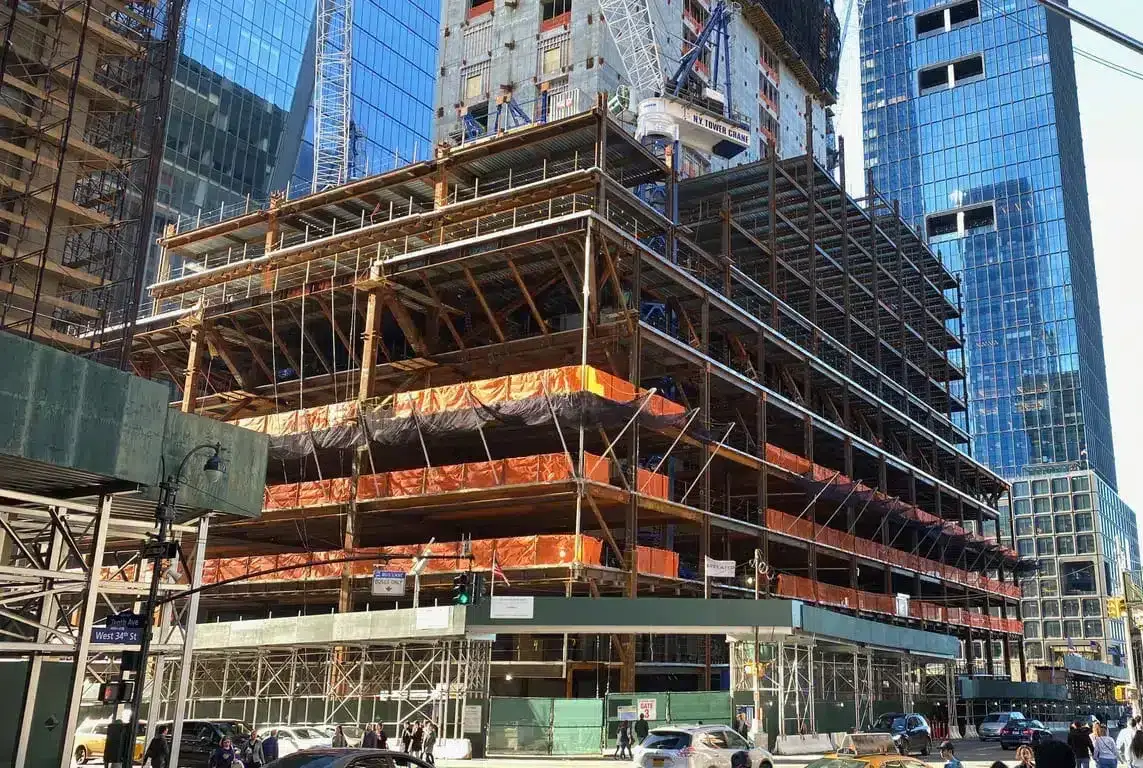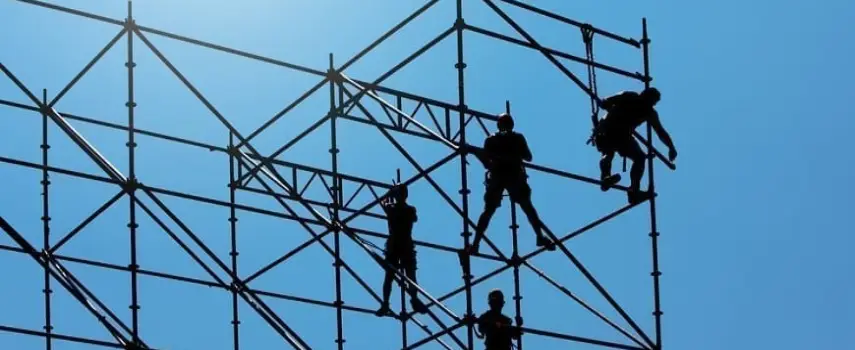Working on scaffolding in New York City presents unique challenges that extend beyond typical risks associated with construction. Due to its dense urban environment, tall skyscrapers, and bustling streets, NYC poses specific challenges and hazards for workers. In 2023, the Department of Buildings (DOB) reported 7 construction-related fatalities. Injuries also increased for the third year in a row, with almost 700 injuries recorded, a 25% increase from the year prior. An increase in construction accidents will often lead in more scaffold accident claims being filed. Here’s why:
Extreme Heights and Wind Exposure
New York City hosts some of the tallest buildings in the country, so many scaffolding jobs occur at significant heights. The higher the scaffold, the greater the exposure to wind, which can be fierce on certain days. Wind is unpredictable and can make it difficult for workers to maintain balance. The force can sway scaffolding or even move unsecured stations, posing risks for both workers and pedestrians passing by below.
Crowded Streets
New York City has a high volume of pedestrian traffic below many construction sites. This makes it critical to ensure that tools, materials, and personal belongings do not fall off the scaffold. To address this risk, NYC requires specific protection systems like netting and barriers to catch any items that may fall accidentally. However, any failure in these safety measures could lead to severe injuries or fatalities.
Unpredictable Weather Conditions
The weather in New York City can vary dramatically, with hot summers, freezing winters, and rainy seasons. Working atop a scaffold in cold weather can lead to frostbite and increase risk of slipping on icy surfaces. During summertime, the heat reflected from surrounding glass buildings can lead to dehydration and heatstroke. Recently, the New York State Legislature proposed a bill that would alleviate some of these concerns. The Temperature Extreme Mitigation Program (TEMP) Act aims to protect workers from such extreme temperatures. Regardless, workers need to be aware of these weather challenges and take precautions, like wearing appropriate clothing and having water available.
Power Lines and Electrical Risks
New York City’s infrastructure includes a network of electrical power lines and other utilities running close to building exteriors. Scaffold workers must be extremely cautions when operating near power lines, as contact can lead to electrocution. Employers are typically required to provide adequate training on identifying and avoiding electrical hazards, and many scaffolds are designed with insulation wherever possible. However, the city’s dense setup often means power lines are nearby regardless, increasing the risks.
Traffic Hazards
In many parts of the city, scaffolding is installed above busy streets and sidewalks, sometimes extending over roadways. This can expose workers to traffic hazards when constructing or dismantling scaffolds. With commercial trucks, taxis, and other vehicles constantly moving through, accidents can occur if a vehicle hits part of a scaffold. The city enforces specific regulations for scaffolding near roadways, but the risk remains.
Psychological Stress

NYC is known for its noise pollution – from honking cars to ambulance sirens. Working on a scaffold in this noisy environment can increase stress, distract workers, and heighten the chance of accidents.
Scaffold workers need to stay highly focused while working. And constant noise can be distracting, making it easy to lose concentration.
This psychological pressure requires workers to be trained not only in physical safety but also in maintaining mental focus amidst urban noise
Unpredictable Environmental Contaminants
Scaffold workers in New York City can be exposed to hazardous materials, particularly when working on older buildings that may contain asbestos, lead paint, or other dangerous substances. Inhaling or touching these materials can lead to long-term health problems, which is why protective gear and adherence to OSHA regulations are paramount.
Safety Regulation Enforcement
NYC has stringent safety codes for scaffolding, but the high demand for construction can lead to rushed projects and potential regulatory oversight. Ensuring that every scaffold is compliant and up to code is a major challenge. Despite these rules, some companies may overlook compliance to meet tight deadlines, increasing the danger for workers. Regular inspections are mandated, yet maintaining consistent adherence across thousands of sites is near impossible.
Risk of Falling Tools
In NYC, it’s common to have multiple construction projects happening on different levels of the same building or neighboring structures. Workers may accidentally drop tools or materials from higher levels, putting scaffold workers below at significant risk. To mitigate this, all workers are typically required to wear helmets, and upper levels must use nets. Our law firm won a landmark case that ensures larger payouts to construction workers that fall victim to such incidents. Nonetheless, the high density of urban construction can make it difficult to eliminate this hazard in totality.
Working on scaffolding in New York City carries unique risks due to the city’s height, density, and environmental unpredictability. To mitigate these dangers, both workers and employers must adhere strictly to safety regulations, use proper equipment, and stay vigilant. As construction continues to expand in New York, enhanced safety protocols and awareness remain vital to safeguarding workers and the public alike. Nevertheless, if you’ve been hurt, be sure to call us and file a scaffold accident claim as soon as possible.




